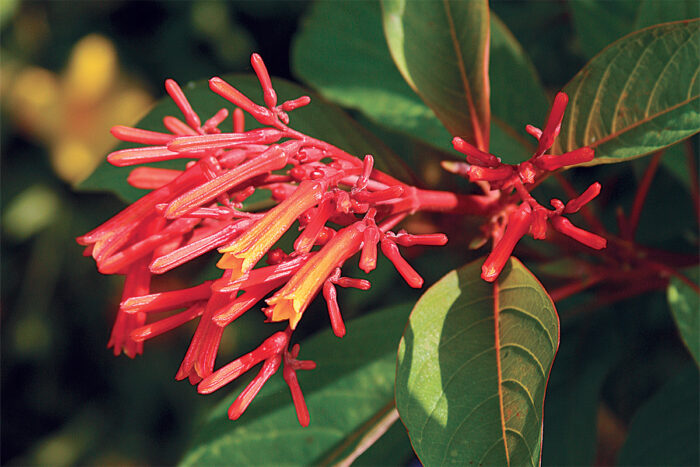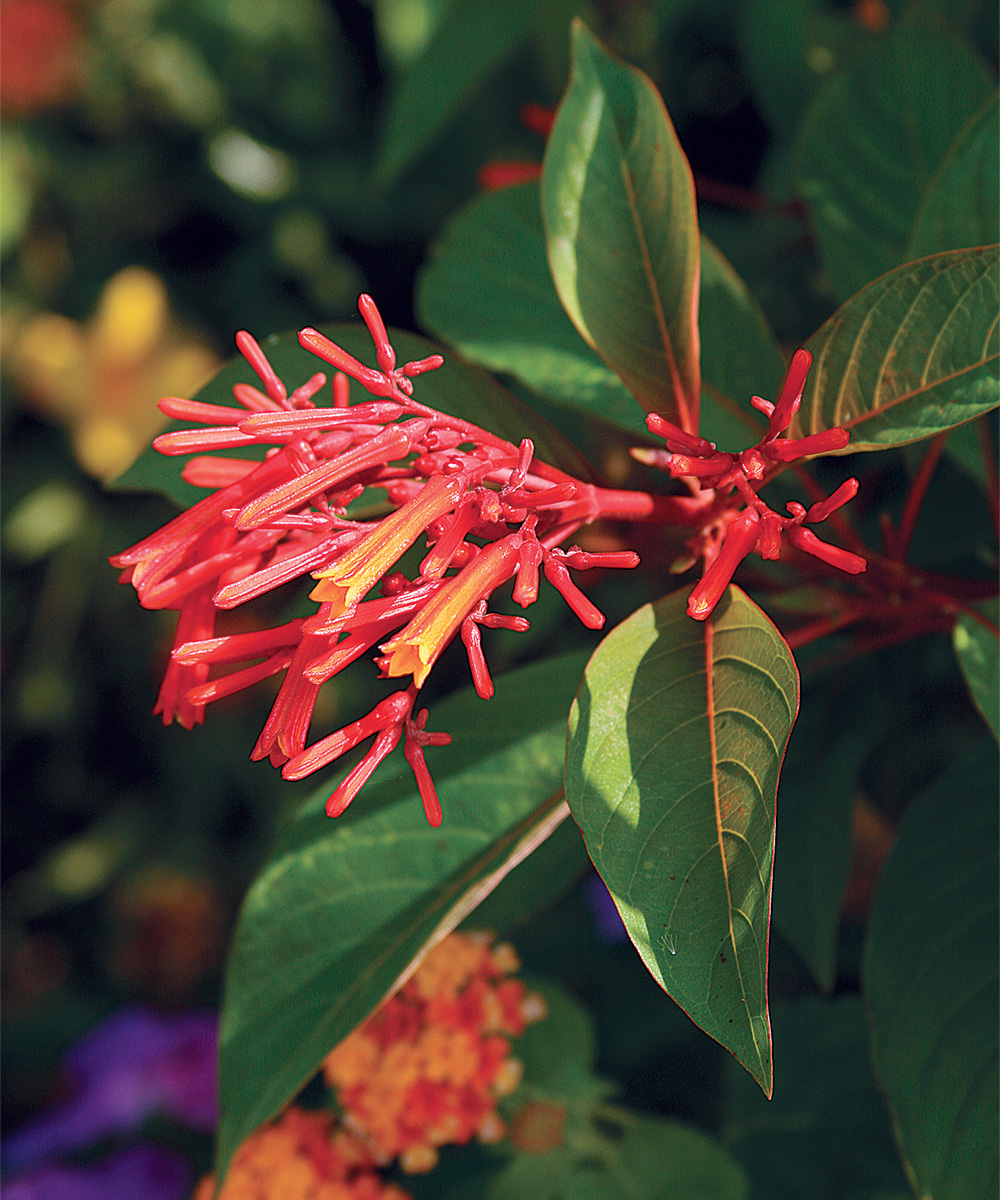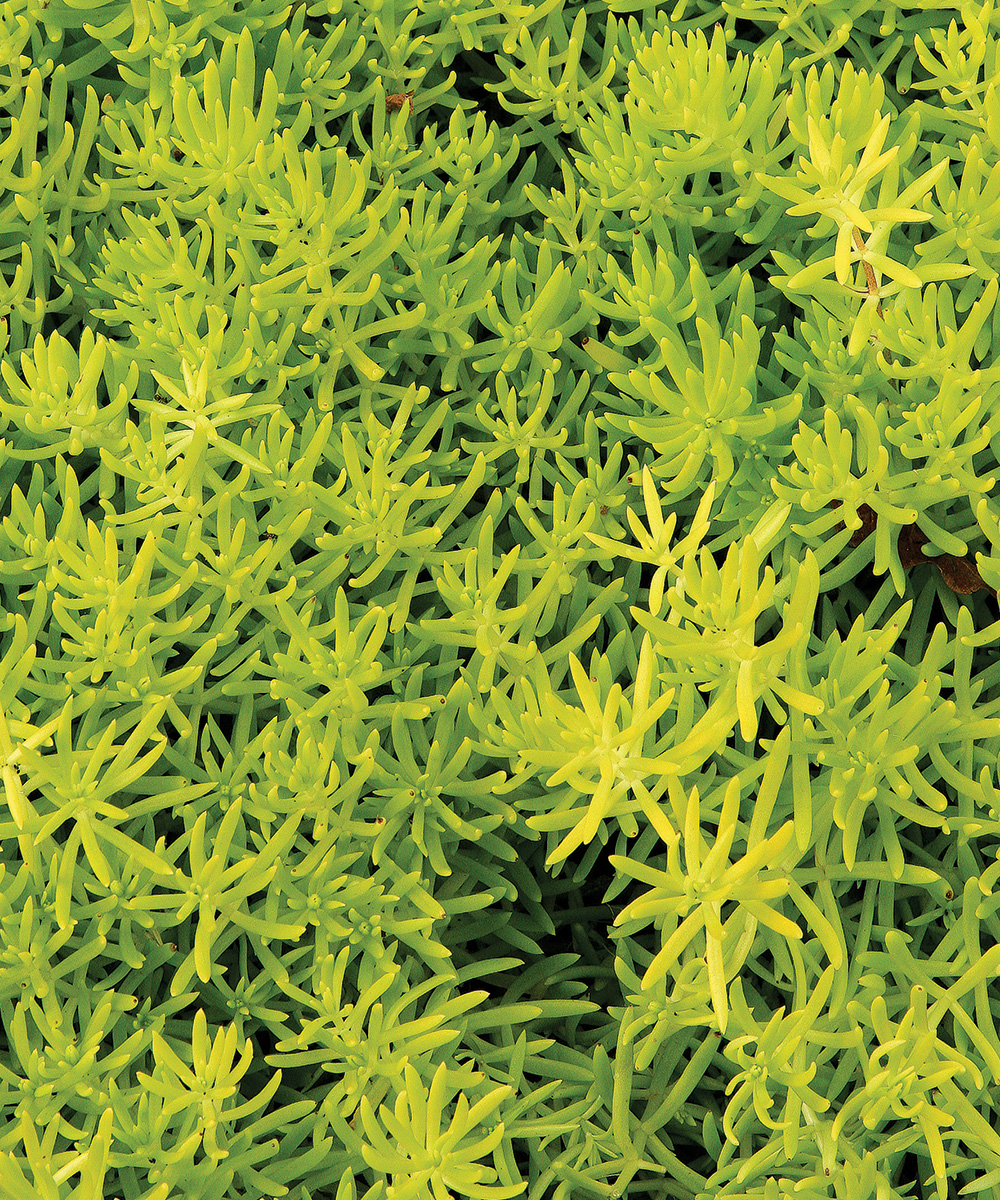
1. Weeping Lantana

Name: Lantana montevidensis
USDA Hardiness Zones: 9 to 11
Size: 3 feet tall and 4 feet wide
Conditions: Full sun; moist, well-drained soil
Weeping lantana can fill a large bare spot in no time. It grows particularly well in containers, too. Weeping lantana provides an understated charm with its purple flowers from midsummer to frost. It is native to South America and has naturalized in parts of the United States, to the point where it has been considered invasive in seven states, though not yet in the Southern Plains.
2. Firebush

Name: Hamelia patens
Zones: 8 to 11
Size: 2 to 3 feet tall and wide
Conditions: Full sun to partial shade; well-drained soil
It’s almost a shame to call firebush a “hole filler.” Its trumpet-shaped, ruby red flowers and light green foliage with red petioles provide endless amounts of interest. Although rated a Zone 8 plant, I have seen it overwintered in a protected Zone 6 spot as an herbaceous perennial. But remember—the warmer the environment, the better firebush performs. Flowers and color are best in summer heat.
3. Northern Sea Oats

Name: Chasmanthium latifolium
Zones: 5 to 9
Size: 3 feet tall and 2 feet wide
Conditions: Full sun to partial shade; moist, well-drained soil
Northern sea oats possesses a grace found in few other grasses, thanks to its arching seed heads that dangle through fall and much of winter. Its broadleaf blades emanate from the stem, rather than arching up from its base. Northern sea oats grows larger every year and sends out many seedlings. These can be transplanted to fill a bare spot or pulled out if they become a nuisance. Northern sea oats is native to the eastern United States and is at home in almost any garden.
4. ‘Lemon Ball’ Sedum

Name: Sedum ‘Lemon Ball’
Zones: 3 to 10
Size: 4 inches tall and up to 2 feet wide
Conditions: Full sun; well-drained soil
The bright chartreuse foliage of ‘Lemon Ball’ sedum brightens up any bare spot. It looks good next to many plants, especially as a complementary contrast to purple ones. Its compact habit makes it great for filling in holes along a garden’s edge or in the cracks of a sidewalk or an old wall. Its succulent foliage adds an interesting texture, making up for its less-than-attractive flowers. ‘Lemon Ball’ is more shatter resistant and less aggressive than other sedums.
Lou Anella is a professor of horticulture at Oklahoma State University in Stillwater.
Fine Gardening Recommended Products

Planting in a Post-Wild World: Designing Plant Communities for Resilient Landscapes
Fine Gardening receives a commission for items purchased through links on this site, including Amazon Associates and other affiliate advertising programs.

Buffalo-Style Gardens: Create a Quirky, One-of-a-Kind Private Garden with Eye-Catching Designs
Fine Gardening receives a commission for items purchased through links on this site, including Amazon Associates and other affiliate advertising programs.


















Comments
Log in or create an account to post a comment.
Sign up Log in